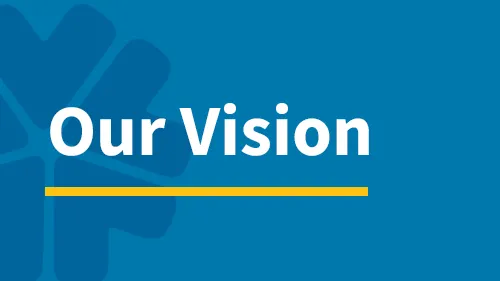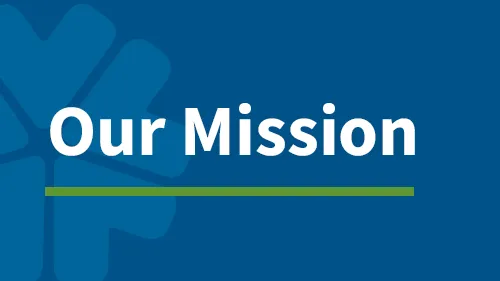Our Vision and Mission
CP3 works to create a culture of prevention for targeted violence and terrorism in the United States, similar to what we see for other types of violence prevention, so that individuals know that targeted violence is preventable and understand the role they play in prevention.
CP3’s Approach to Prevention
CP3’s approach to targeted violence and terrorism prevention (TVTP) is based on time-tested principles of public health that focus on the safety and well-being of entire populations.
CP3 builds partnerships with a wide range of TVTP providers and stakeholders across every level of government, the private sector, and within local communities. CP3’s prevention activities seek to improve the conditions in which people grow, live, work, and age that shape health outcomes. For TVTP and CP3, this means addressing the social determinants that can decrease the likelihood of individuals engaging in targeted violence and terrorism on four prevention levels, categorized as primordial, primary, secondary, and tertiary.

Read more about CP3's public health-informed approach to TVTP and the role of the prevention provider.
CP3 Staff
Targeted violence and terrorism prevention requires multidisciplinary approaches. That's why CP3 staff members come from so many diverse backgrounds. Staff experience includes fields like:
- Academia
- Civil rights and civil liberties
- Communication
- Community engagement
- Counterterrorism
- Emergency management
- Military service
- Public health
- Public safety
- Social work
- Threat assessment and management
- Trauma-informed, behavioral health education
- Violence prevention.
All of the team is dedicated to enhancing the nation’s capacity to prevent targeted violence and terrorism.
Frequently Asked Questions
CP3 uses a public health-informed approach to targeted violence and terrorism, focusing on community-based prevention strategies and using evidence-based methods to reduce the risk of violence. This approach respects individuals’ fundamental rights and freedoms and safeguards civil liberties.
CP3's approach to targeted violence and terrorism prevention is informed by key principles from the field of public health. These include prioritizing individuals’ general health and well-being. CP3’s public health-informed approach is based on four levels of prevention:
- Primordial Prevention involves norms, policies, or strategies at the societal level that positively impact the health and well-being of individuals and communities. This includes protecting freedoms and access to resources and opportunity and minimizing harmful conditions. These conditions can create anger, fear, and uncertainty, which violent extremists can exploit and use to place blame on specific communities, labeling them as threats.
- Primary Prevention decreases the likelihood of targeted violence and terrorism by enhancing protective factors that reduce the risk of violence. These can include fostering social inclusion and connectedness among peers and between youth and adults, enhancing community awareness, and supporting civic institutions.
- Secondary Prevention decreases the likelihood of targeted violence and terrorism among individuals exhibiting behavioral indicators associated with previous acts of targeted violence and terrorism. This can include supporting networks that refer individuals to public health providers or behavioral threat assessment and management teams, or by implementing bystander training.
- Tertiary Prevention decreases the likelihood of targeted violence and terrorism among individuals who previously enabled, attempted, or carried out those forms of violence, such as through redirection, rehabilitation, or reintegration programs.
In addition to decreasing the likelihood of violence, these prevention activities create more resilient communities with greater access to the services, institutions and positive relationships that decrease the psychological and social harm that communities face if an act of targeted violence does occur.
CP3 offers a range of support, including technical advice, funding opportunities, and educational resources, to help communities develop their own prevention strategies against targeted violence and terrorism. Led by a public health-informed approach, CP3 promotes the creation of multidisciplinary networks of partners and providers. This approach is designed to strengthen protective factors that empower healthy communities and build capacity among violence prevention providers to support those drawn to violence.
CP3 prioritizes privacy, civil rights, and civil liberties within DHS legal authorities and policy. CP3 works to ensure that its programs include fundamental constitutional and legal protections. CP3 does not engage in widespread data collection or activities like law enforcement investigations or intelligence gathering. CP3 does not engage in censorship or encourage or facilitate any censorship. Government censorship of viewpoints not only infringes on individuals’ constitutional rights, but it is also an ineffective tactic to prevent targeted violence and terrorism.
Individuals and organizations can engage with CP3 through various channels, including participating in our training programs and webinars or applying for our Targeted Violence and Terrorism Prevention Grant Program.
For the purposes of CP3, a “prevention provider” is a skilled and knowledgeable professional who:
- Directly or indirectly prevents violence by helping people develop the knowledge, attitudes, and skills they need to achieve safe, positive, healthy outcomes; and/or
- Institutes protective factors and addresses risk factors for risk reduction within a community; and/or
- Provide services for individuals, as needed, to prevent violence; and/or
- Serves as a violence-prevention policy maker or program manager.

Contact Us
To learn more about our initiatives, participate in our programs, connect with us, or for general inquiries, please visit our Contact Us page.
CP3 prioritizes privacy, civil rights, and civil liberties within DHS legal authorities and policy. CP3 works to ensure that its programs include fundamental constitutional and legal protections. CP3 does not engage in widespread data collection or activities like law enforcement investigations or intelligence gathering. CP3 does not engage in censorship or encourage or facilitate any censorship. Government censorship of viewpoints not only infringes on individuals’ constitutional rights, but it is also an ineffective tactic to prevent targeted violence and terrorism.


